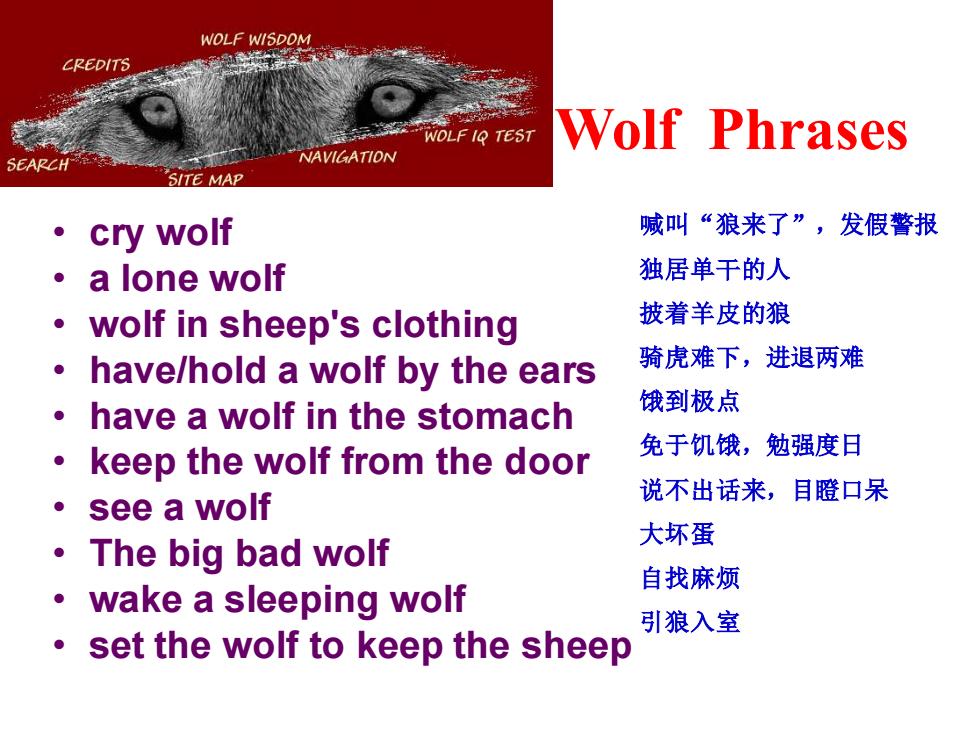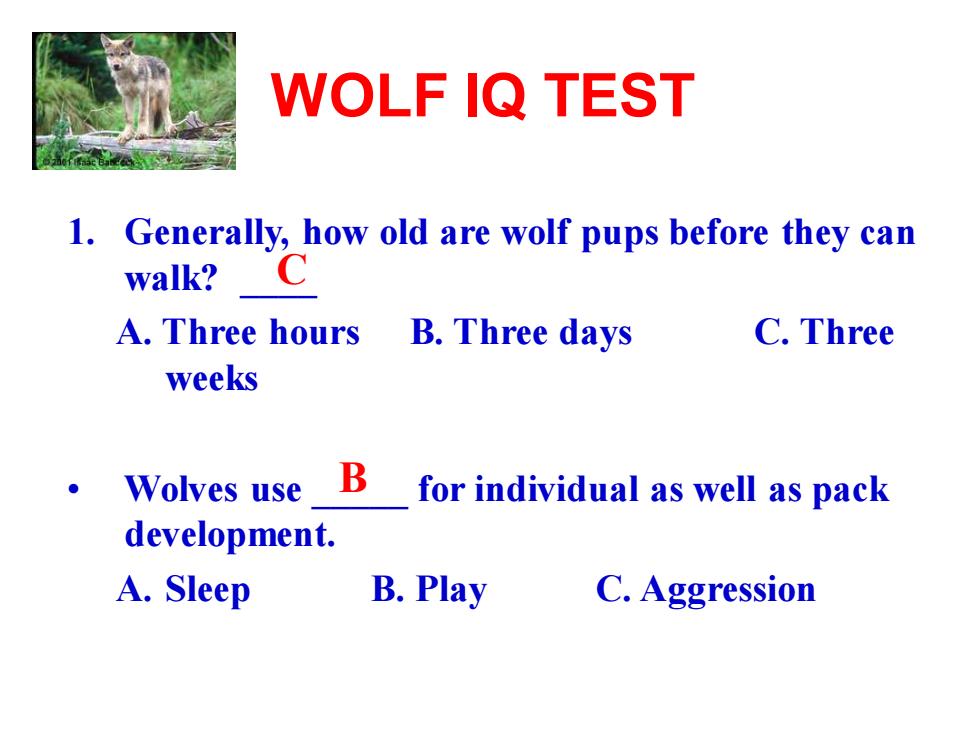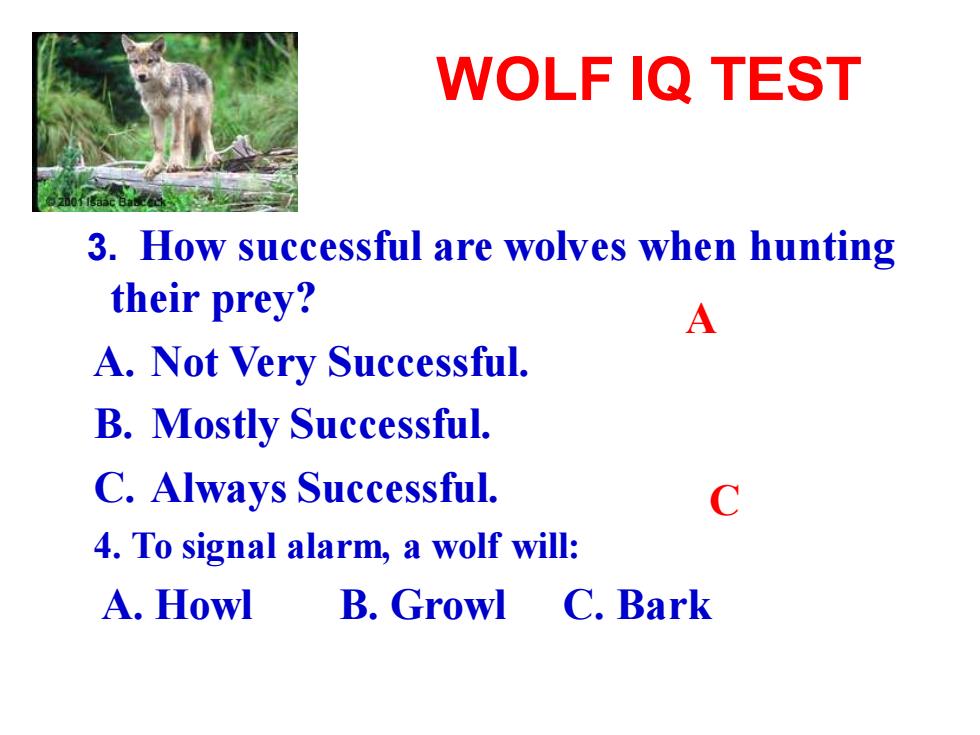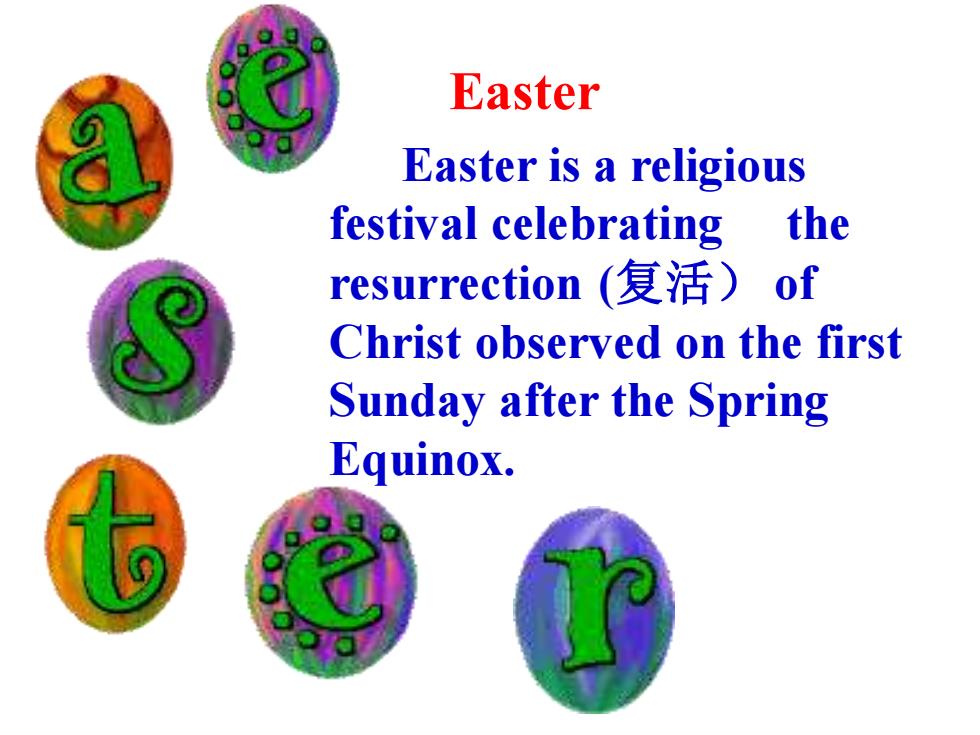
WOLFWISDOMCREDITSWolfPhrasesWOLFIQ TESTNAVIGATIONSEARCHSITE MAP喊叫“狼来了”,发假警报cry wolf独居单干的人a lone wolf披着羊皮的狼wolf in sheep's clothing骑虎难下,进退两难have/hold awolf bytheears饿到极点havea wolf inthe stomach免于饥饿,勉强度日keepthe wolffromthedoor说不出话来,目瞪口呆see a wolf大坏蛋The big bad wolf自找麻烦wakea sleepingwolf引狼入室setthe wolf to keepthe sheep
Wolf Phrases • cry wolf • a lone wolf • wolf in sheep's clothing • have/hold a wolf by the ears • have a wolf in the stomach • keep the wolf from the door • see a wolf • The big bad wolf • wake a sleeping wolf • set the wolf to keep the sheep 喊叫“狼来了”,发假警报 独居单干的人 披着羊皮的狼 骑虎难下,进退两难 饿到极点 免于饥饿,勉强度日 说不出话来,目瞪口呆 大坏蛋 自找麻烦 引狼入室

WOLFIQTEST1. Generally, how old are wolf pups before they canCwalk?C. ThreeA. Three hoursB. Three daysweeksBWolves useforindividual as well as packdevelopment.A. SleepB. PlayC. Aggression
WOLF IQ TEST 1. Generally, how old are wolf pups before they can walk? _ A. Three hours B. Three days C. Three weeks • Wolves use _ for individual as well as pack development. A. Sleep B. Play C. Aggression C B

WOLFIQTEST3. How successful are wolves when huntingtheir prey?AA. Not Very Successful.B. Mostly Successful.C.Always Successful.C4. To signal alarm, a wolf will:C. BarkA. HowlB. Growl
WOLF IQ TEST 3. How successful are wolves when hunting their prey? A. Not Very Successful. B. Mostly Successful. C. Always Successful. 4. To signal alarm, a wolf will: A. Howl B. Growl C. Bark A C

WOLFIQTEST5. A high, curled tail on a wolf is generally a sign of:A. Dominance B. Fear C. SubmissionA6.The survival and the future of wolves willdepend on:A. Sending wolves to CanadaCB. B. Making wolves petsC. Increased education
WOLF IQ TEST 5. A high, curled tail on a wolf is generally a sign of: A. Dominance B. Fear C. Submission 6. The survival and the future of wolves will depend on: A. Sending wolves to Canada B. B. Making wolves pets C. Increased education A C

EasterEaster is a religiousthefestival celebratingofresurrection(复活)Christ observed on the firstSunday after the SpringEquinox.t
Easter Easter is a religious festival celebrating the resurrection (复活) of Christ observed on the first Sunday after the Spring Equinox